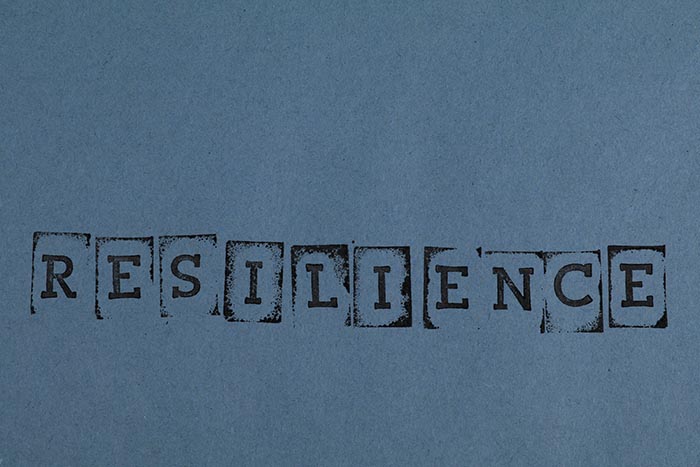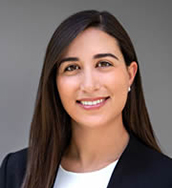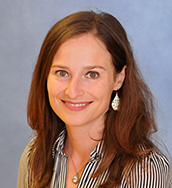Study: Students with disabilities show resilience that could guide post-pandemic education

LAWRENCE — The COVID-19 pandemic has presented a new world of challenges for education. But a new study from the University of Kansas shows the voices and experiences of students who are already among the most marginalized can help lead the way in making young people’s strengths the focus of education.
Students with disabilities already faced a disproportionate amount of inequities in the American educational system before the pandemic. Researchers interviewed students in this population about their experiences during the pandemic and found that students relied on their own strengths, resilience and self-determination. The findings not only highlight the importance of supporting young people to build resilience and ownership of their education and future, but it can also inform returning to in-person education, particularly highlighting the importance of student self-determination and agency.
 “We’re increasingly looking at self-determination across the lifespan, especially for younger students, including those in middle and high school. We wanted to gauge their experiences with self-determination and how they navigated the barriers they experienced with school, home and social environments during the pandemic to determine how self-determination and resilience intersect,” said Sheida Raley, assistant research professor in special education at KU and the KU Center on Developmental Disabilities, one of the study’s co-authors.
“We’re increasingly looking at self-determination across the lifespan, especially for younger students, including those in middle and high school. We wanted to gauge their experiences with self-determination and how they navigated the barriers they experienced with school, home and social environments during the pandemic to determine how self-determination and resilience intersect,” said Sheida Raley, assistant research professor in special education at KU and the KU Center on Developmental Disabilities, one of the study’s co-authors.
Researchers interviewed more than 20 students ages 11-17 with a variety of disabilities for the study. It was published in the Journal of Education for Students Placed at Risk and led by Jessica Toste of the University of Texas, in collaboration with Raley and Karrie Shogren, director of the KU Center on Developmental Disabilities at KU; Jessica Gabriela Coelho of the University of Texas at Austin; and Samantha Gross Towes of California State University Northridge.
Researchers found the participants' pandemic experience responses fell into three major themes: adaptability, increased social awareness and disability identity.
 “These young people bring strengths to the table that are not always acknowledged in special education services and supports. Understanding and enabling young people to voice how they use those strengths during the pandemic can tell us how better to support all students and leverage student strengths and self-determination as we go back to more and more in-person schooling,” Shogren said. “We heard from students the ways they were able to adapt, problem-solve, adjust their goals and leverage supports during the pandemic. This highlights the importance of leveraging students that, as we transition back, while providing supports that address their identified needs and anxieties around the pandemic and its aftermath.”
“These young people bring strengths to the table that are not always acknowledged in special education services and supports. Understanding and enabling young people to voice how they use those strengths during the pandemic can tell us how better to support all students and leverage student strengths and self-determination as we go back to more and more in-person schooling,” Shogren said. “We heard from students the ways they were able to adapt, problem-solve, adjust their goals and leverage supports during the pandemic. This highlights the importance of leveraging students that, as we transition back, while providing supports that address their identified needs and anxieties around the pandemic and its aftermath.”
While the study participants experienced difficulties with remote learning, quarantining and social distancing, they also demonstrated how they drew on their personal resilience and self-determination to navigate the challenges. The students highlighted how they used their abilities and skills associated with self-determination to be in closer contact with their teachers to ask questions, receive technical support and complete assignments. That increased interaction improved their relationships with their teachers, though students often reported they missed in-person social interactions with teachers and classmates. However, they still found ways to interact with peers virtually through social media, video chats and other methods, the authors noted. The respondents also indicated an increase in self-awareness, as demonstrated by an increased willingness to talk with teachers about their individual learning needs.
“The students showed they could build self-advocacy skills they maybe didn’t have to use before the pandemic, when they saw their teachers regularly,” Raley said.
Students also demonstrated an increase in disability awareness and supports needed to meet their learning goals. They discussed feeling empowered to discuss exactly what supports they benefit from, when they had supportive teachers and learning opportunities. The respondents also indicated an understanding of the mental health effects of the pandemic and resulting isolation, but noted that their families had become more involved in their support network during remote learning. In some cases, families became much more involved in their children’s school work, others reported how they had more interaction with their siblings and their respective education, as they had previously attended separate schools.
As for their personal experiences during the pandemic, students commonly responded that they had learned patience, which also supported them to learn to adapt when life changes. The experience also opened their eyes to social issues, both nationally and internationally, including matters of public health and disability. Students also demonstrated development of positive emotion regulation skills, especially in instances where they might become frustrated or upset.
The findings not only show how resilient young people with disabilities can be but also how they used their abilities and skills associated with self-determination, such as problem-solving and self-advocacy, to pursue their goals while in school and after graduation during the pandemic. The findings are consistent with research demonstrating students who experience the Self-Determined Learning Model show improved educational outcomes.
“These results tell us again how valuable it is for students to set their own goals,” Shogren said. “If we can embed this in our curriculum, youth can navigate through any challenges they face, even challenges like the pandemic.”
The educational and personal experiences of the students in the study also lend support to the approach of giving young people ownership of learning, as opposed to setting mandates or telling students what is expected of them and how they will achieve it without directly engaging them in identifying and setting targets for their learning goals.
“We need to let students lead the conversation and tell us what supports they need to navigate new learning models,” Raley said. “That can benefit all students, as well as teachers, to identify what support students need to make progress toward their goals that are important to them in life and learning.”
Image credit: Pexels.com